Since the early 2000s, podcasts have been steadily gaining in popularity thanks to the low barrier to listen and the diverse range of topics to choose from. If you’re like the other 144 million Americans out there, odds are you’ve listened to at least one podcast in your lifetime… and perhaps on more than one occasion, after listening to a particularly entertaining or inspiring podcast episode, you’ve thought to yourself – I could do that.
Well, guess what, with a little can-do attitude, a secure internet connection, and the right podcast mic, you can do that. Luckily, the can-do attitude is free (stop procrastinating!). You likely already have a sufficient internet connection, so the real question now is – what is the best podcast microphone for you?
Unless you went to audio engineering school or spent some time in the recording studio, the task of buying a new podcast microphone might seem a little bit intimidating. With hundreds of options out there to consider, which podcast mic should you choose to capture your silky smooth vocals and ensure the best fit for the podcast format you have in mind?
The reality is, the answer to the question “What is the best podcast mic for me?” is different for everyone and depends on many factors. The good news is after you read through a few of the key considerations below, you’re going to have a much better idea of what sort of podcast mic you’re looking for, so you can take the first step in starting your very own podcast (stop procrastinating!).
Do I Really Need a Good Quality Podcast Microphone?

No podcast rule book states you need to have a proper microphone to record your show. Your earbuds with a built-in mic will certainly pick up audio that you can record and use for your podcast. However, if you have any intention of making an impactful and professional impression on your soon-to-be listeners, you may want to consider stepping up your microphone game right out of the gate. After all, you only get one first impression.
Since most podcasts are broadcast in audio alone, you’re only able to appeal to one of your listeners’ five senses – so you better make it count. Low-quality microphones (like your everyday earbud-mic combo) tend to produce a very one-dimensional, almost ‘tinny’ recording that lacks richness and sonic depth to effectively capture the high and low ends of your vocal range. This spectrum of sound plays a large part in making your listeners truly feel the deep profundity of a statement or the warmth and sincerity of a guest's hearty laughter. In short, a good mic can amplify your vocal appeal.
Finally, if you don’t have access to a studio or sound-proofed area in your house, a good podcast mic will be able to help isolate your voice from other small background noises while you’re recording. Background noises not only make it difficult for your listeners to hear what you’re saying, but they also distract from the content you’re discussing, which can interrupt the personal connection you’re trying to forge with your audience.
Bottom line: If you intend on making a real run at starting your own podcast, get a podcast microphone. This one simple step will give you an immediate leg up on every other earbud-mic podcaster out there!
What is the Best Podcast Mic for Me?

Ok, you’ve concluded that you’re serious about starting your podcast, and now it’s time to choose a mic. While you’ll no doubt come across a lot of sexy (read: expensive) podcast mics during your online research, before you go buying the most expensive, top-rated mic on the market, make sure you fully understand what your specific needs are in a microphone.
If you’re just starting out, you may want to trial a couple of different affordable mic options before you buy something with a big-league price tag. Below are a few key decisions you’ll need to make before you decide which podcast mic is best for you:
USB or XLR Connector
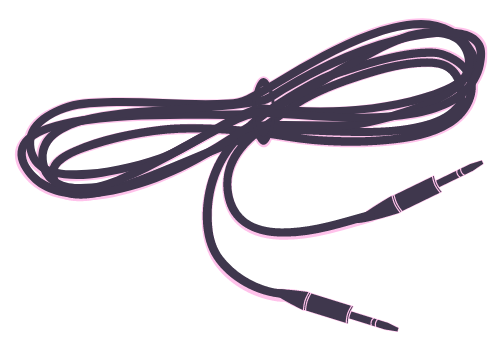
A simple place to start your search is to determine whether you’re looking for a podcast mic with a USB or XLR connector. If you’re going to be recording alone (or having guests on the show via Skype, Zoom, etc.) and only need to connect one microphone directly to your computer, a USB connection is likely your best bet.
Most mics with USB connectors are “plug-n-play” in that they are super intuitive to use once you plug them into your computer. Just make sure that whatever computer you’re using either has a USB port (most do) or that you have the correct dongle on hand to connect before you sit down to record.
If you are planning on having one or more guests join you in the same room, you’ll likely need multiple dedicated microphones for each of your guests to ensure distinct voice recordings. In this case, mics with an XLR connector will likely be ideal.
XLR connectors are the same cables used for multiple mics on stage at a concert and work well to give each individual their own mic space. They also typically provide a better sound than a USB mic, though that will ultimately depend on the mic's overall quality. NOTE: you will need additional equipment such as a mixer to connect each mic to a central sound system.
Dynamic or Condenser Microphones
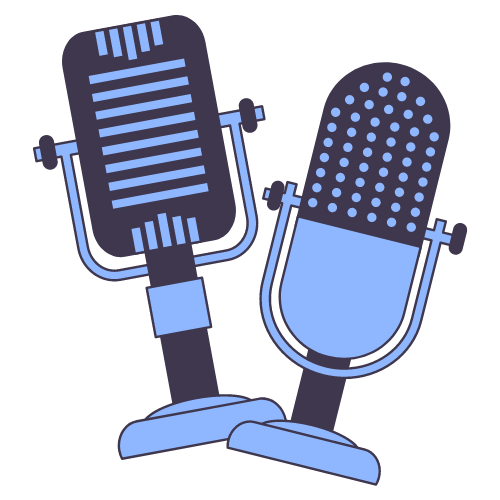
Once you determine what sort of connection you’re looking for on your mic, the next step would be to decide what type or category of microphone you want. While there are four core mic types out there (dynamic, condenser, tube, and ribbon), you’ll likely want to focus your research efforts on the dynamic and condenser versions only.
There’s nothing wrong with using a ribbon or tube mic. Still, they are both fairly fragile, require a little more professional know-how to operate properly, and use older technology that may not jive with your modern interface. So, to find you the best all-around podcast mic, let’s stick to dynamic and condenser mics.
Dynamic mics are the most universally used podcast mics on the market, and for good reason. They are durably constructed (externally and internally), easy to use, come in many USB or XLR options, and run on phantom power provided by the audio cable that connects them to your mixer or interface (i.e., you don’t require external direct current to power them – one less cord!).
While dynamic mics do not typically provide as rich a sound as a condenser mic, If you’re able to record in a quiet room and speak directly into the microphone, you’ll have no issues getting the sound quality you need. Dynamic mics tend to pick up less ambient noise in the background, so while you may lose a bit of atmospheric depth, that could be a good thing if you’re not able to record in a sound-proofed studio.
Finally, if you’re looking to take your show on the road, a dynamic mic is what you should be carrying. They are solid mics that can take the jostling around that comes with moving them from place to place.
Condenser mics essentially provide the flipside of the coin to all of the dynamic mic attributes. They are slightly more fragile in their build, in many cases require external power, and can pick up unwanted background noise if you’re not in a very quiet recording environment. Because of this, you’ll want to make sure that you also have a tripod or stand for your condenser mic, so you don’t hear thuds and rustling sounds when you touch or move it.
However, condenser mics will be able to provide you with a much richer sound to your recordings, and this attribute should not be undervalued. A higher-quality podcast recording can be the difference between your show and one that has a less full and warm sound.
Regardless of which podcast mic type you choose, make sure that you first consider the environment you’re recording in, the amount of moving around you’ll be doing, and the level of quality you’re going for, and we’re confident you’ll make the right mic choice.
What is a polar pattern and which one is best for me?
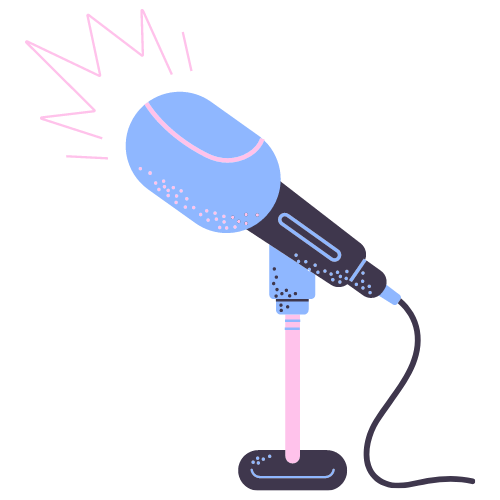
The rabbit hole that you can go down when learning about the science behind audio recording and engineering is deep and wondrous. But for the sake of time and without going too deep here, we’ll provide a quick overview of what a polar (or recording) pattern is and how it can affect your podcast mic selection.
The polar pattern of a microphone refers to the directional sensitivity it possesses. Different microphones pick up sounds better depending on the angle a sound arrives to the mic head. For example, an omnidirectional mic picks up sound from – you guessed it – every direction, whereas a bi-directional mic will only pick up sound from the front and rear, but ignores noises coming in from the sides of the mic.
Luckily, if you’re looking for the best podcast mic to record your vocals, you only really need to focus on one mic recording pattern – Cardioid. Cardioid (or hyper-cardioid) mics are the most ideal for podcasts as they only pick up sound from the front, very little from the sides, and no sound from the rear. This combo allows for crystal clear vocals without any additional ambient sound.
How much should I spend on a podcast mic?

Finally, one of the biggest determining factors for choosing a mic is your budget. If money is no object, then feel free to shop around for the best high-end mic that you like. However, if you need to be a bit more selective in your purchase and stay within a certain budget range, you can rest easy knowing that there are incredible podcast mic options at all levels.
You don’t need the most expensive mic to record great content. That said, like most things, the more you’re able to dish out for a mic, the higher quality output you’re going to get.
Below are some great options for your new podcast mic, regardless of your budget – happy shopping!
Budget Microphones (UNDER $100):
If you’re just getting started or have a tight budget for your new podcast mic, never fear. Below are three options that will provide you with great sound for a great price:
RØDE NT-USB Mini
If you’re looking for a solid entry-level podcast mic, the RØDE NT-USB Mini is a stellar option. It has a quick USB connector that is compatible with most computers and tablets, and its compact size makes it a convenient option for podcasters on the go!
The mic itself delivers a crisp and clear audio recording, and thanks to its cardioid polar pattern, it picks up very little background noise. It also comes with a built-in ‘pop’ filter that suppresses those pesky plosives during your recording and a 360-degree swing mount so you can perfectly position the mic in front of you.
The easy-to-use features, paired with RØDE’s world-class studio quality mic, makes the NT-USB Mini a winning combo.
Check it out on RØDE's Website | Learn More & Buy Now
Audio-Technica ATR2100x
The Audio-Technica ATR2100x is a multi-functional mic that comes with both USB (works with Windows and Mac) and XLR output connection options for ultimate convenience and versatility. While it does come with a desk-top tripod, this mic looks best when it's handheld, giving those that enjoy the art of spoken performance, the ultimate creative tool.
The ATR2100x is built to last from durable metal but produces a super smooth sound. It comes with a built-in headphone jack, so you can actually monitor your vocal volume directly from the mic itself, which is a really cool feature. The mics cardioid polar pattern disregards surrounding noise and only picks up the vocals at hand – yours.
If you’re looking for more of a ‘hands-on’ podcast mic experience that lets you explore your recording space, this could be the mic for you!
Check it out on Audio-Technica's Website | Learn More & Buy Now
Samson Q2U
With the Samson Q2U you truly get a one-stop-shop set up for at-home or in-studio recording needs. This dynamic mic is ideal for podcasts and music recordings (should you feel inspired to do a musical number during your show!). It comes with both USB and XLR connection options and is compatible with pretty much anything you plug it into – computer, tablet, a digital audio workstation, mixer – you name it.
Solidly constructed with die-cast metals and a heavy gauge mesh grille, this mic takes a lickin' and keeps on tickin', which is great for those podcasters who find themselves traveling around to record. It also comes with a convenient tripod stand (plus extension) and foam windscreen to add to an already amazing recording experience.
There are few other mics you’ll find at this price that deliver consistently high quality and provide such a diversity of recording options right out of the box!
Check it out on Samson's Website | Learn More & Buy Now
Mid-Tier Microphones (UNDER $250)
Working with a bit more of a budget but still want to find a reasonably priced, high-performance podcast microphone that fits all of your needs? Here are a few mid-tier beauties that will satisfy your craving for crisp sound:
ElectroVoice RE320
Slick and sleek looking, the RE320 is a dynamic microphone that will elevate you into pro podcaster territory. Known for its ability to capture a range of both vocal and instrument sources effectively, this mic might surprise you at how good your vocals can actually sound.
The Variable-D proximity control ensures that the tonal shifts in your voice stay regulated and sound consistent. Its unique dual-voicing switch gives you access to both a general-purpose and kick drum curve, which provides you with the ideal frequency setting and high-quality detail for your voice on the low or high end.
Finally, it comes with an integrated humbucking coil and built-in pop filter to manage any loud plosives or distracting sounds made from the lips, the teeth, and the tongue during your recording. The RE320 has a universal XLR 3-pin connector and cardioid polar pattern, perfect for great vocal recordings.
Check it out on ElectroVoice's Website | Learn More & Buy Now
Shure MV7
A versatile and intuitive piece of technology, this mic exists at the intersection of quality and convenience. The Shure MV7 is a dynamic microphone with both USB and XLR outputs options so that you can use it easily with your laptop at home or in the studio. Adding to the ease of use, it comes with proprietary Voice Isolation Technology that ignores background noises, giving you a professional recording experience that sounds like you’re in a studio or sound booth.
Providing you with additional control once you start recording, listen to your vocals through the headphone jack, and then adjust the gain, volume, and monitor mix via the built-in touch panel right on the mic.
For those that think USB connections aren’t as professional sounding, the MV7 will make you think again. Once you connect, make use of the ShurePlus MOTIV app which features Auto Level Mode, for an optimal mix (or you can control levels manually), and you can customize your sound signature by selecting from ‘dark,’ ‘natural’ or ‘bright.’ You can also select ‘near’ or ‘far’ mode depending on how close you’re going to be to the mic.
Flush with incredible features and great sound, Shure always delivers and the MV7 is no exception!
Check it out on Shure's Website | Learn More & Buy Now
MXL BCD-1
A classic broadcast mic, the MXL BCD-1 is a solid option for all your podcasting needs. The BCD-1 is a dynamic microphone that captures warm, rich vocal tones with high output levels, so you don’t need to crank the gain. It’s a dynamic mic with an XLR connection and cardioid polar pattern, so it checks off all of the standard podcast mic qualities as well.
The BCD-1 comes with a built-in swivel stand, so you can position it in the perfect spot depending on your unique vocal needs. It also does a great job of rejecting any ambient noise in the room, allowing for a comfortable recording experience. Finally, it comes with a shock mount and tuned grill, which together provide an added level of ambient sound reduction.
The MXL BCD-1 has received glowing reviews from pros all over, thanks to its great sound for a surprisingly affordable price!
Check it out on MXL's Website | Learn More & Buy Now
RØDE Procaster
On the market for a large-capsule dynamic mic at a steal of a price? There’s no doubt that the RØDE Procaster can deliver for you. This broadcast quality XLR mic delivers a high-level output with a tight cardioid polar pattern, providing you with surgical control over your sound levels.
The Procaster is proven to add warmth and depth to your voice, whether you come by it naturally or not, so get ready to enjoy some low-end magic. It also comes with an internal shock mount to reduce handling noise and a built-in pop filter.
Even though the durable all-metal construction is sure to last a lifetime, the icing on the cake is that you can extend the standard 1-year warranty to 10 years… just for registering your new microphone on the RØDE website!
Check it out on RØDE's Website | Learn More & Buy Now
Pro Microphones (Over $250)
If you’re looking for some of the best mics out there and podcasting is your chosen passion or profession, then keep reading for a line up of truly impressive mics that are pro-quality and worth every penny:
Audio-Technica BP40
It’s rare that you can find a dynamic mic that actually delivers a sound as warm and natural as a condenser mic – but the Audio-Technica BP40 does just that. Thanks to the large-diaphragm design, the BP40 produces a BIG sound that captures the low-end richness of your vocals, which is routinely identified as the most pleasing frequency to (your soon-to-be) listeners' ears.
To keep the attention focused on the big vocals, the BP40 comes with humbucking voice coils to reduce EMI (electromagnetic interference) and a 100Hz high-pass filter to provide top-quality pop protection during your recording. The hyper-cardioid polar pattern goes above and beyond the classic cardioid arrangement to provide an intense focus on your vocals within any environment.
If all of the above weren’t enough to whet your pallet, the rugged all-metal construction not only looks but feels pro!
Check it out on Audio-Technica's Website | Learn More & Buy Now
Heil PR40
Coming in various colors like black, black with a gold grill, champagne, gold plate, or chrome-plated, the Heil PR40 looks as badass as it sounds. This dynamic mic connects via XLR and provides a supremely smooth and flat response, capturing the warmth and true essence of your vocals, every time.
The PR40 has a wide frequency range to pick up both the high and low ends and has a large, low mass diaphragm, shock mounts, and custom magnet metals, all housed within a uniquely designed microphone body. Its dual-mesh screens have different aperture sizes to control airflow. The internal breath blast filter provides excellent voice capture for all ranges while canceling plosives to create a seamless vocal recording.
Need to carry your PR40 from show to show or gig to gig? It comes with a sweet leatherette carry bag for easy and stylish transport!
Check it out on Heil's Website | Learn More & Buy Now
Shure SM7B
The Shure SM7B may look unassuming, but this mic is one of the best in the biz when capturing pro-quality vocals. Whether you’re a close-talker or prefer a more relaxed, spaced-out environment, the SM7B’s wide-range frequency response, and the tight cardioid polar pattern will make sure only the sound you want gets in. It also boasts unparalleled bass roll-off and mid-range controls.
The unique air suspension shock isolation is able to filter out any unwanted breathing noises, and the advanced EMI shielding cancels out hums from surrounding electrical equipment, completely isolating your vocals in any environment. It also comes with a detachable windscreen for added protection.
Known for producing clean and natural studio-quality recordings, the SM7B checks off all the boxes when it comes to the industry standard for a podcast mic.
Check it out on Shure's Website | Learn More & Buy Now
ElectroVoice RE20
The final high-end mic on our list typically needs no introduction. The ElectroVoice RE20 is another long-time industry standard broadcasting and podcast mic used by the pros – and for good reason. The natural smooth tones it produces have been a mainstay on FM radio for years, and it moonlights as an excellent instrument recording microphone as well.
Its large dynamic diaphragm provides a frequency response that’s uniquely tailored to any voice. The result is a warm and natural recording that you would swear was captured on a condenser mic. Pair that with a mid-bass tone-shaping switch, internal pop filter and shock mount, and humbucking coil guards, and the result is a masterfully crisp, smooth, and deep sound.
Not that it needs mentioning, but as you would expect, this classic mic comes with an XLR connection, a true cardioid polar pattern, and the ElectroVoice Variable-D feature for a minimal proximity effect.
Check it out on ElectroVoice's Website | Learn More & Buy Now
Special Use Microphones
Last but not least, below are a couple of additional options outside of the traditional table-top podcast microphones that you may want to consider:
Yellowtec iXm Podcaster 629
Talk about your one-stop-shop! The Yellowtec iXm Podcaster 629 is a unique piece of equipment because, well, it’s a mic AND a sound recorder all built into one – crazy, we know. The perfect mic for podcasters on the go, this mobile mic allows you to capture podcast-quality audio in any environment, without your computer or mixer.
Unlike its predecessor, the iXm Recording Mic, which had interchangeable mic heads, it only comes with a dynamic cardioid mic head from the iXm PRO line. Thankfully, it’s the only mic head you’ll need as it delivers on all of the key features required for a stellar podcast sound.
Ideal for versatile, in-field content creation, the iXm Podcaster 629 boasts that minimal post-production is needed so you can record with confidence and stay current by getting your podcast content out asap!
Check it out on Yellowtec's Website | Learn More & Buy Now
RØDE Smartlav+
Looking for a trusted and reliable hands-free podcast mic option that also delivers high-quality sound and allows you a little more mobility and freedom to move around? The RØDE Smartlav+ is a staple Lav (lavalier) mic, ideal for broadcast, interviews, speaking panels, on-stage presentations, video recordings, podcasts (of course), and more.
Unlike the other podcast mics on this list, the Smartlav+ comes with an omnidirectional condenser capsule, allowing for accurate sound capture from a wider range of directions, allowing for ease of placement on lapels, collars, etc. Its tiny 4.5mm mic makes it low-visibility and comes with a windshield and durable mounting clip. The kevlar cables also provide peace of mind that they don’t break, for when you’re on the move.
The best part of the RØDE Smartlav+ is that it plugs into any smartphone or tablet and can be controlled from the RØDE Reporter App, which means no clunky computer or mixer is needed!
Check it out on RØDE's Website | Learn More & Buy Now
Now that you have some excellent options for podcast mics, make sure that you consider any additional equipment or software you may need, such as external windscreens or pop filters, tripods or stands, USB Mixers, XLR cables, and more, to create the perfect podcast recording for you and your guests – Good luck out there!
PodcastMovement.com is a participant in the Amazon Services LLC Associates Program, an affiliate advertising program designed to provide a means for sites to earn advertising fees by advertising and linking to Amazon.com. Some links on this page will generate revenue for Podcast Movement if you make a purchase, however all products we recommend are products that we have personally used.
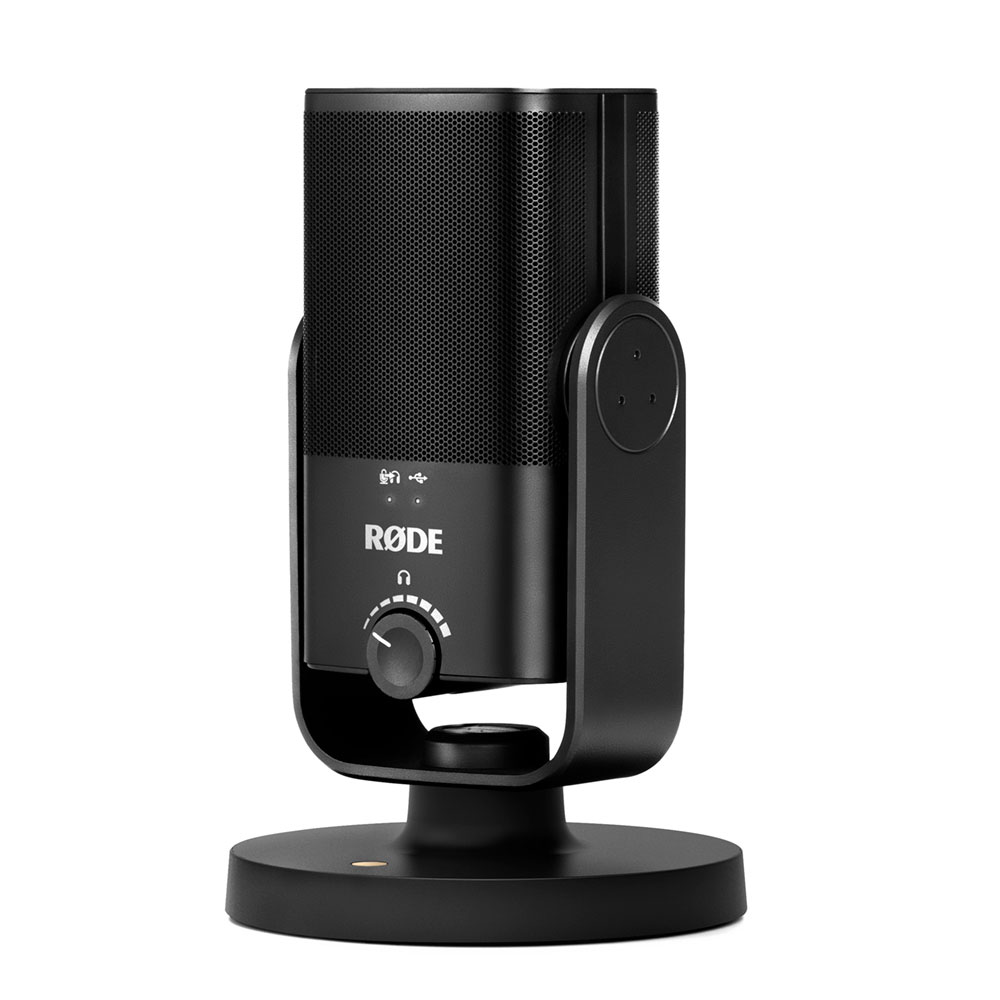
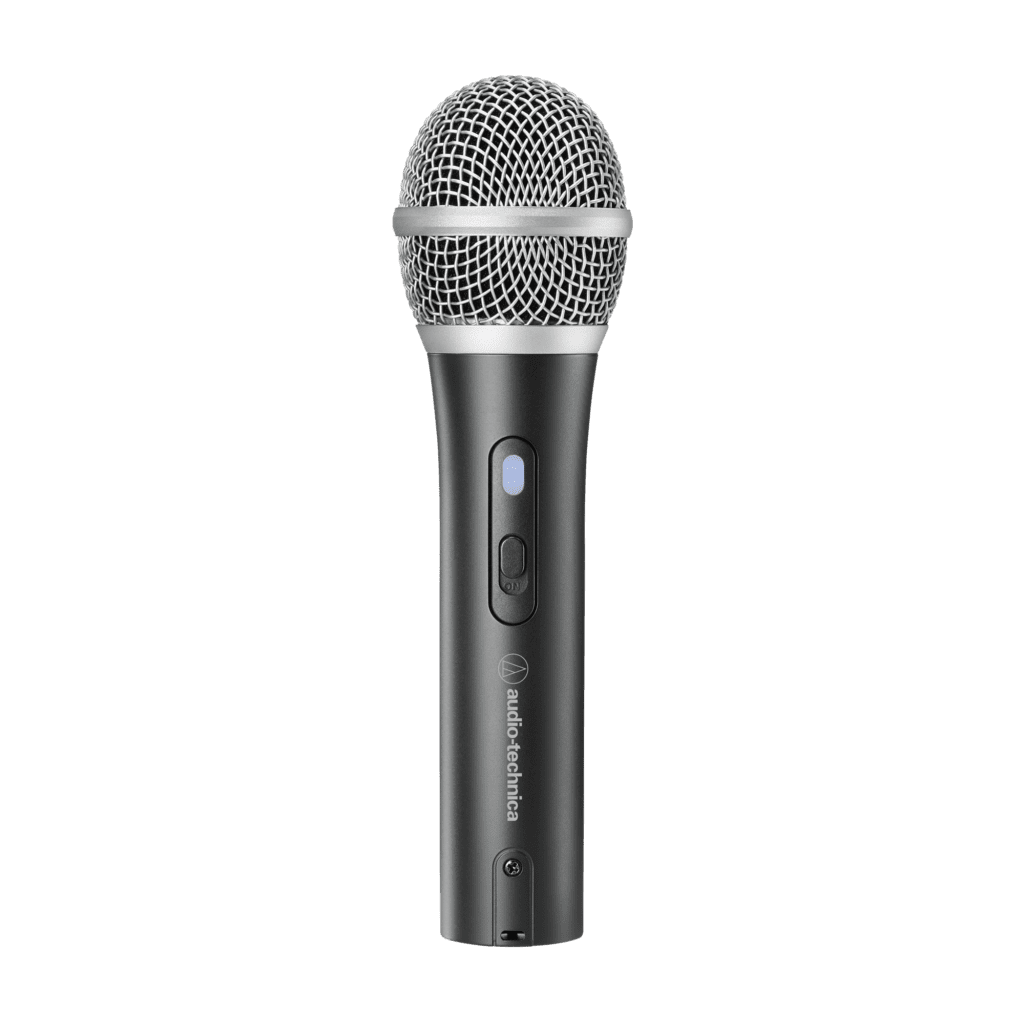
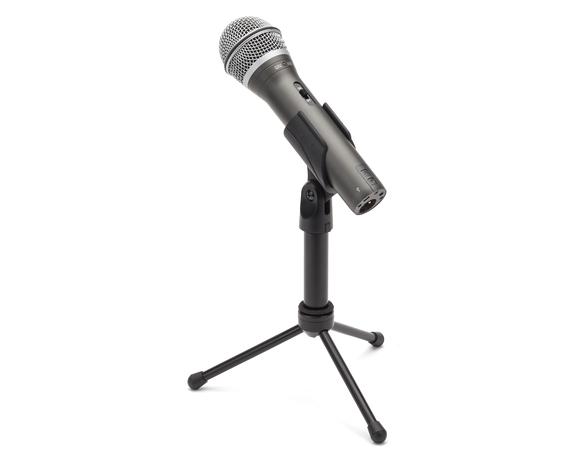

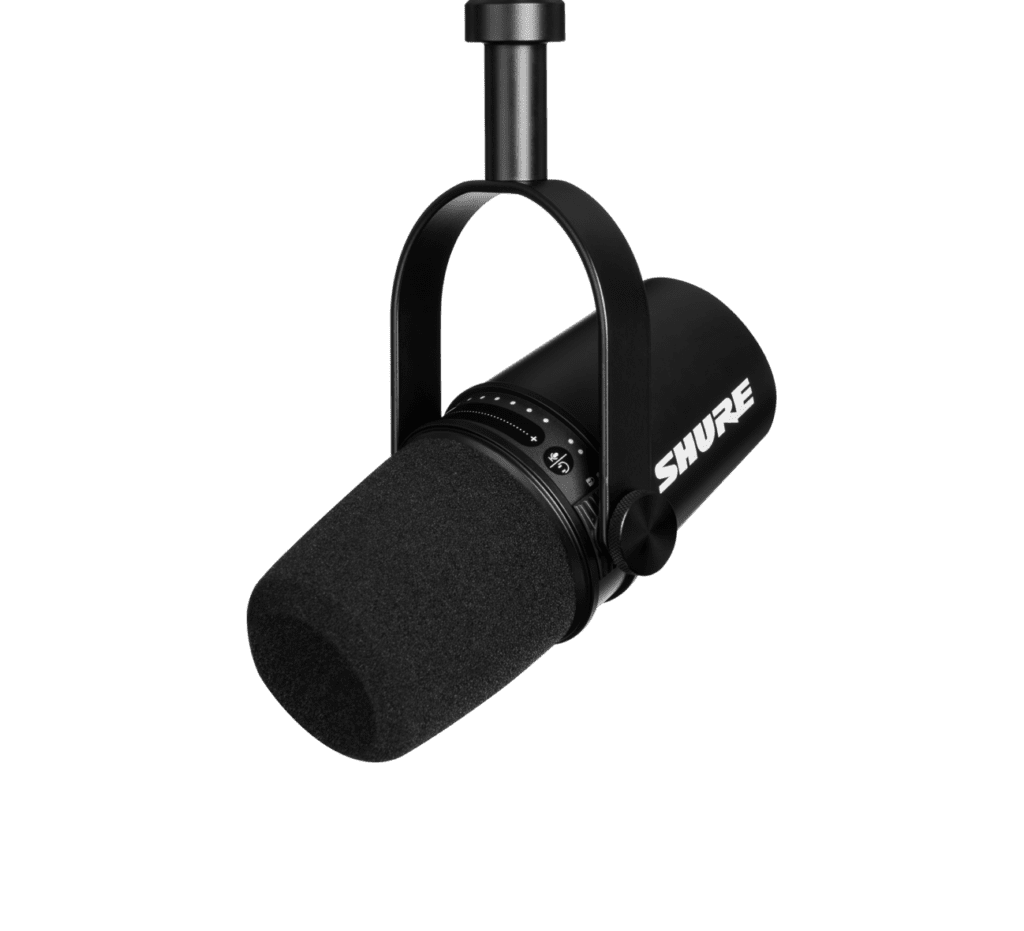
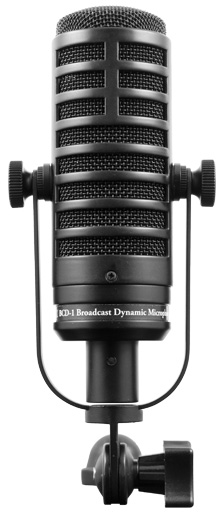
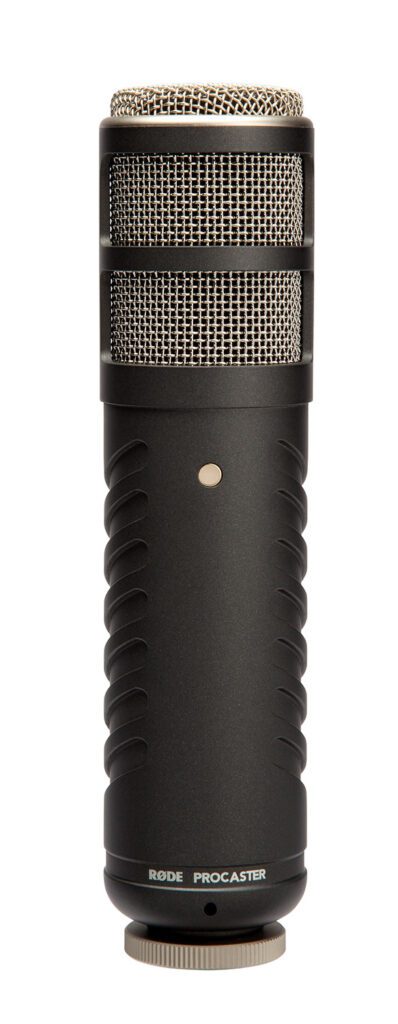
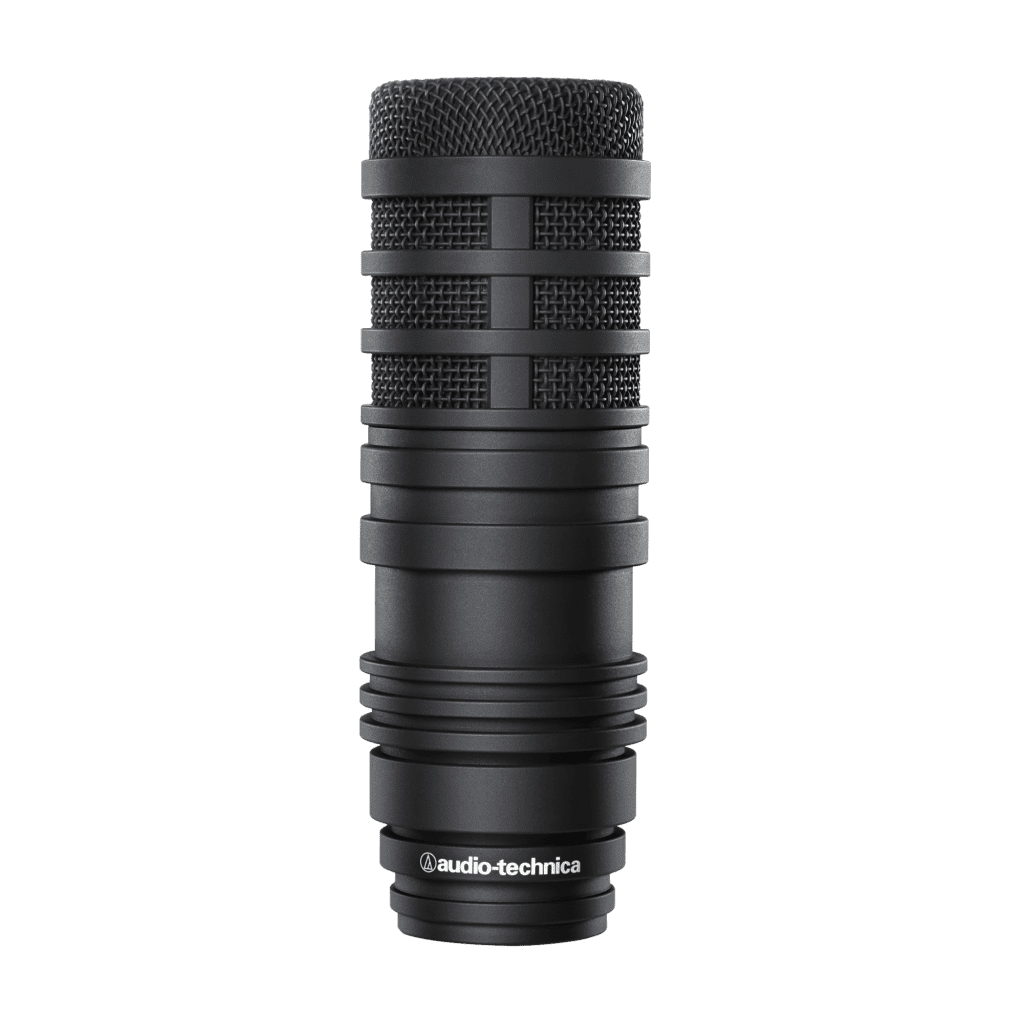
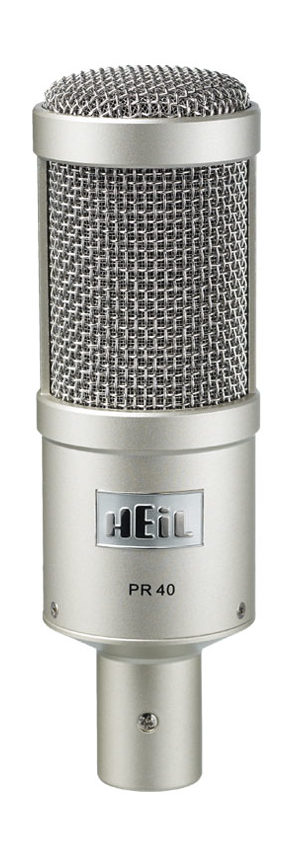
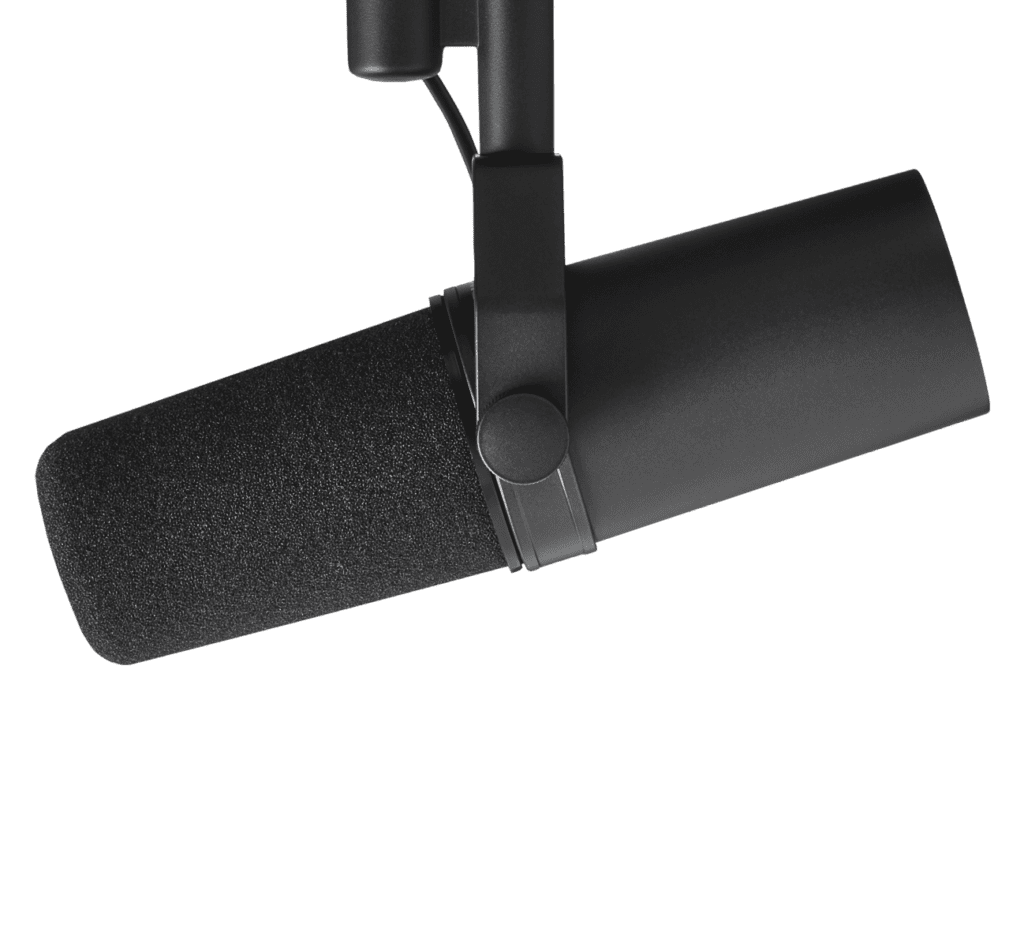

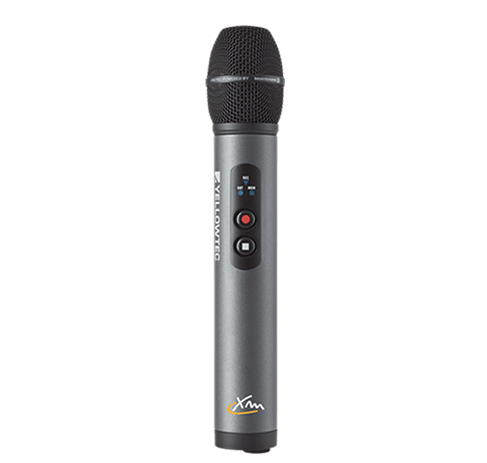
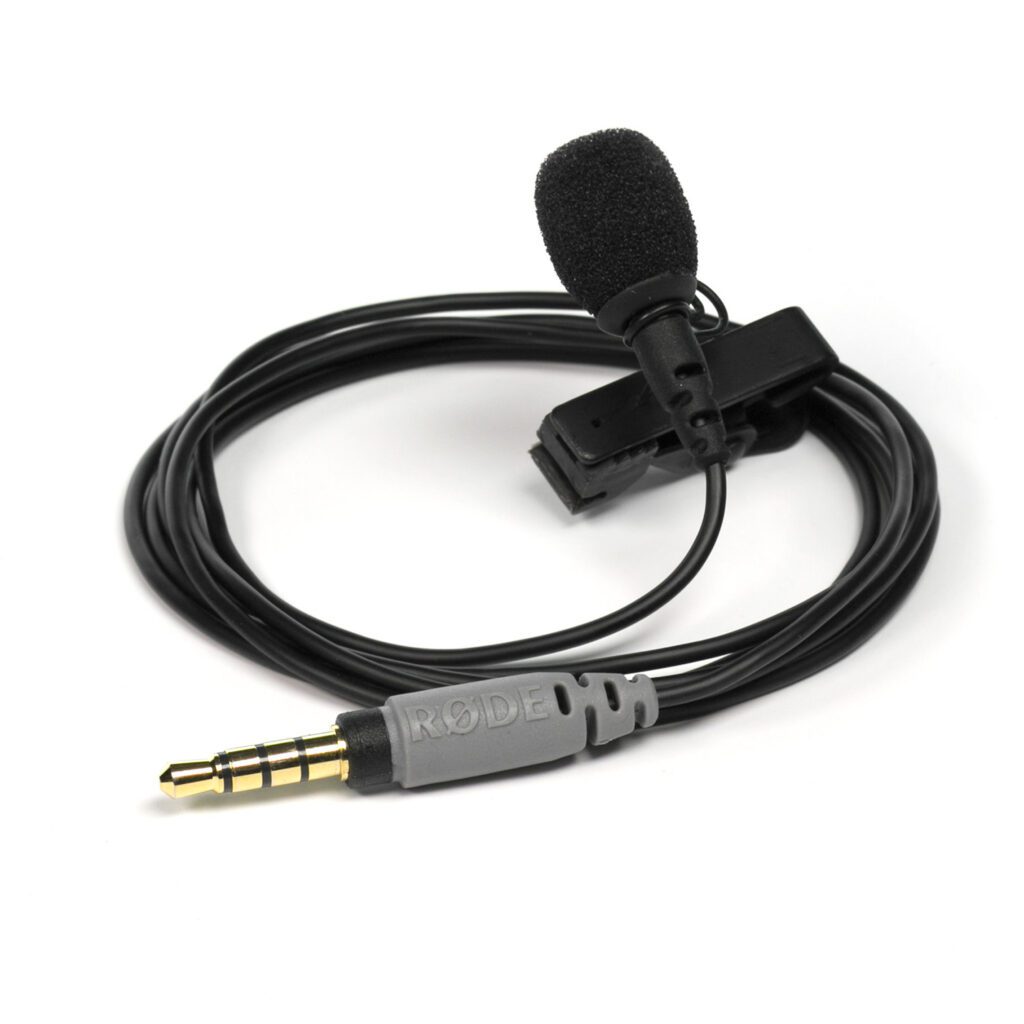
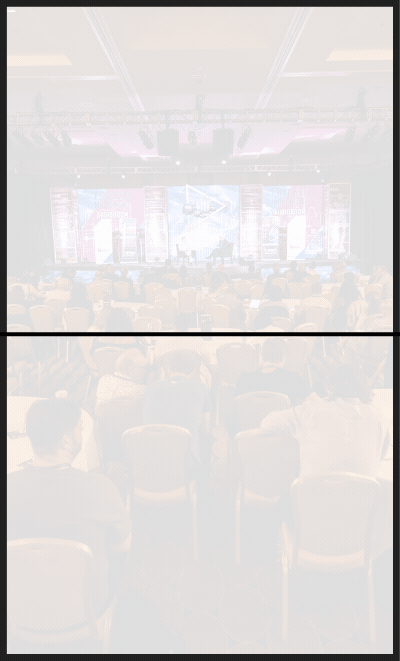
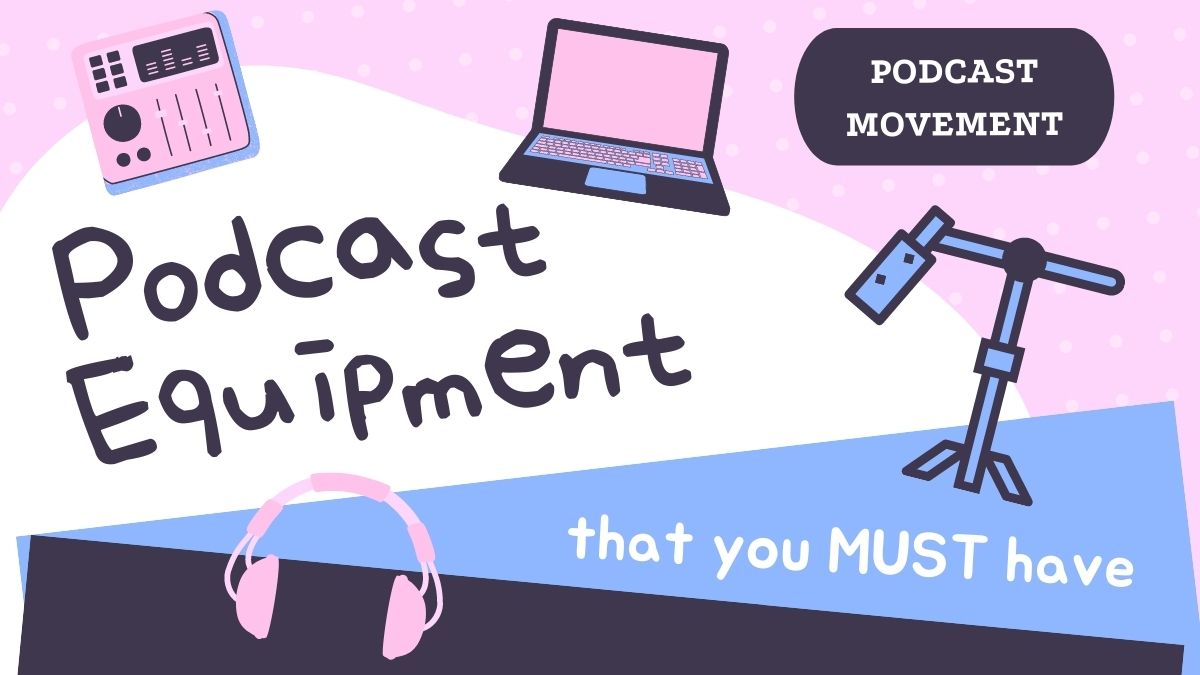
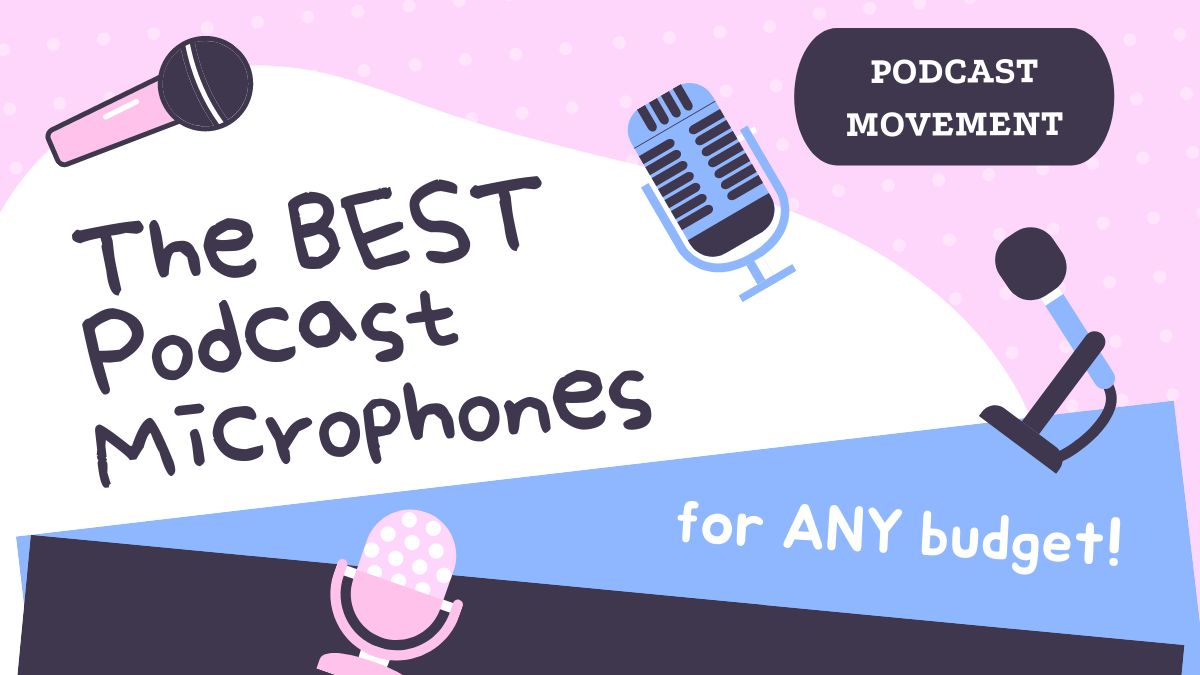
Join the Movement